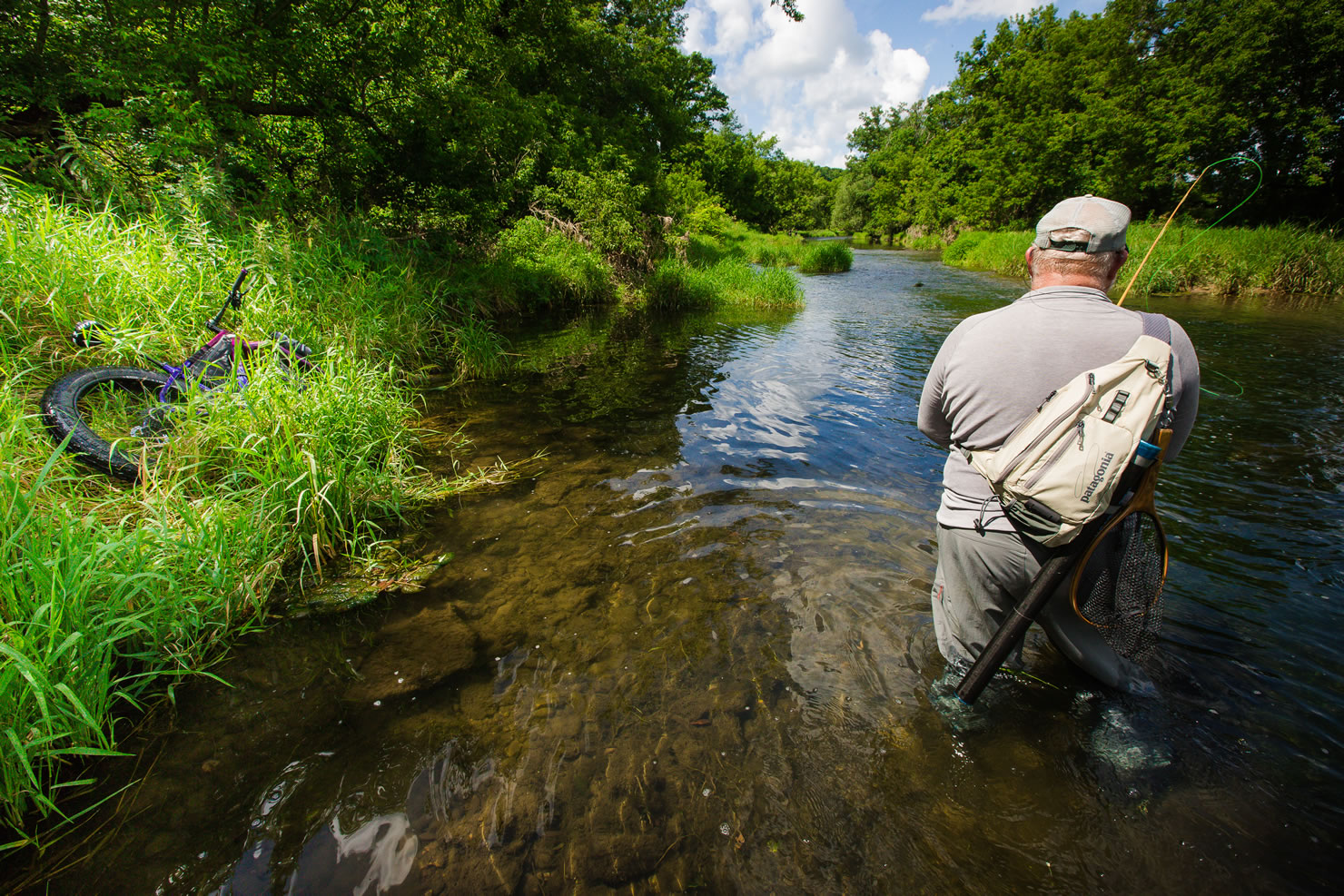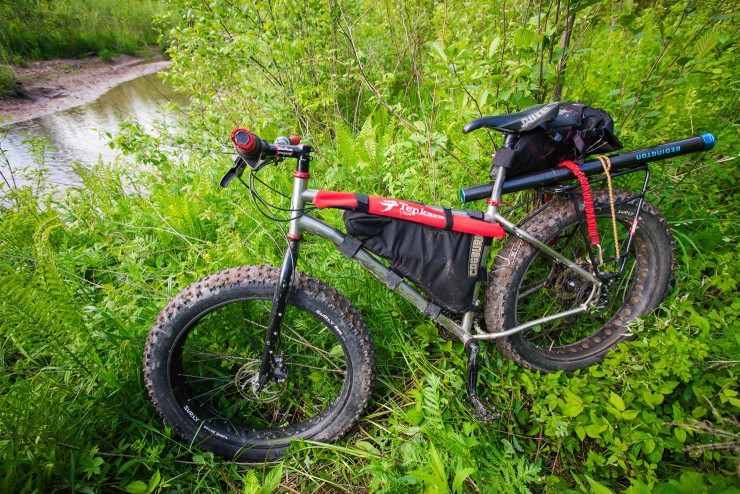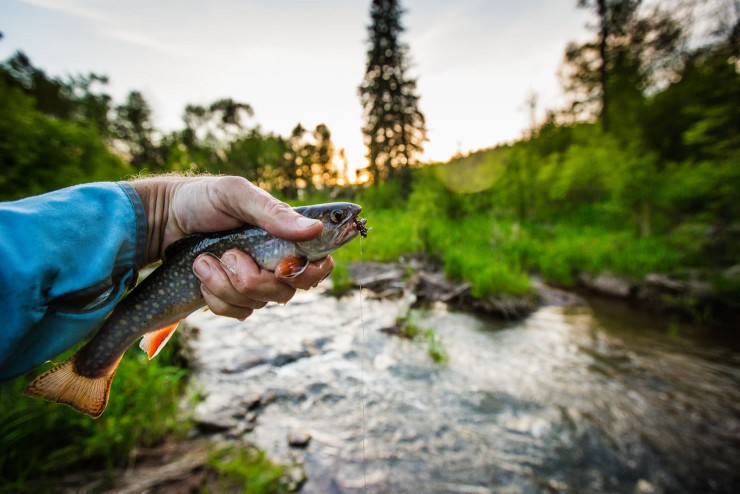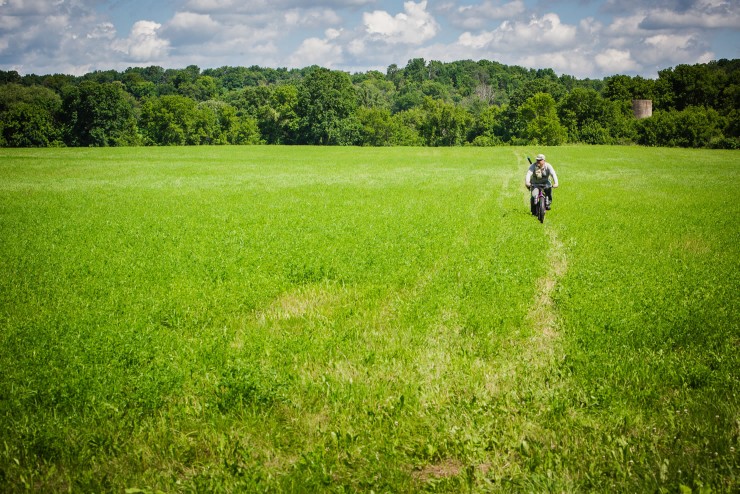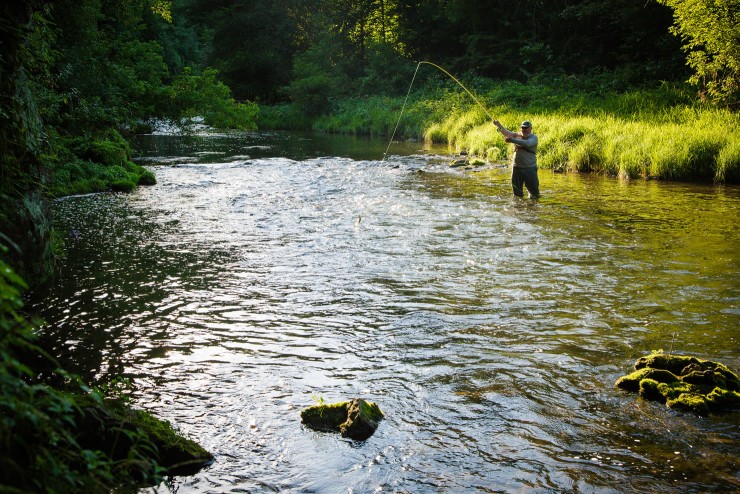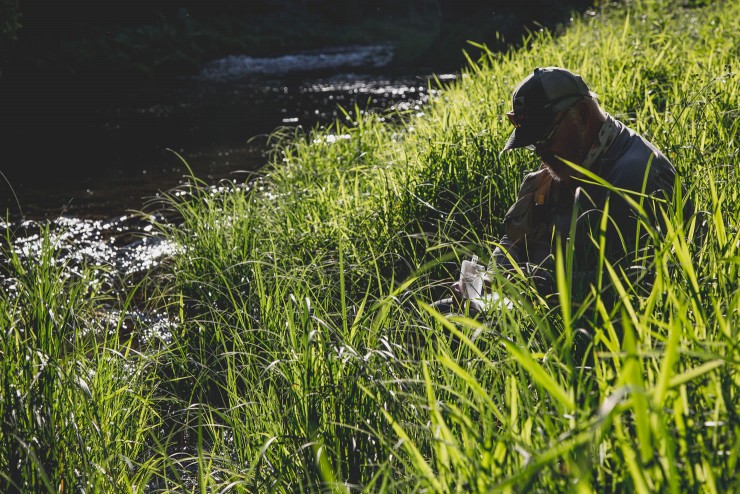A Guide to Bikefishing, by Hansi Johnson
Fancy finishing a day of bikepacking with a freshly caught trout, grilled on the embers of your camp fire? An outdoorsman to the fingertips, Hansi Johnson shares his insights into the world of Bikefishing.
When it comes down to it, there are really just two ways to fish. One is for meat and the other is to sport fish. Which means you’re either eating fish or playing with fish. Regardless of whether you’re looking to pick bones out of your teeth or dance with a trout, fishing is one hell of a ride. Riding a bike to access it makes it an even better one.
Fish are a finite resource. There are only so many and they only live in so many places. This means that if you can get to the places where there are less people, your chances of hooking up are that much better.
I use my bike strategically to hunt fish. I also use it on classic bikepacking tours – I always try and sneak a rod into my gear to help me fill the cook pot, which of course is a great end to a hard day on the trail.
Here are some simple lessons I have learned about adding fishing to my riding – or riding to my fishing.
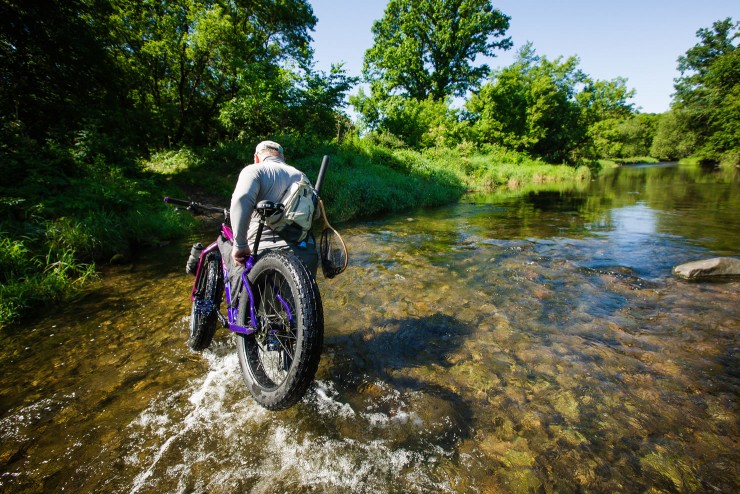
1. The right bike is key.
Bikepacking.com lists all sorts of great bikes you could choose from. As we all know, there is a right tool for the job. Regardless of skinny tires or fat tires, or even fatter tires, I find being able to run a framebag or mount a rear rack is crucial for hauling fishing gear.
My personal ride is a Salsa Mukluk Ti fat bike. It’s dialled with front and rear racks, and it’s outfitted with all the bags I can hang on it. When it comes to sneaking along forest roads, rutted out ATV Trails and old game paths that run along stream banks, I’ve found fat bikes to be the ultimate fishing weapon. Another favorite bike I have used extensively is my Cogburn CB4. I opted for the Blaze Orange paint job over the camo paint job, because I am famous for hiding my bike in the woods and not finding it again…the bright orange paint job has since changed that situation!
For less extensive fishing sessions, or for more technical trails, I use an Advocate Watchman with 27.5+ tires. Although it’s not set up with rack mounts, with bags it’s a variable ride and works great for outings where I don’t need to carry extra gear.
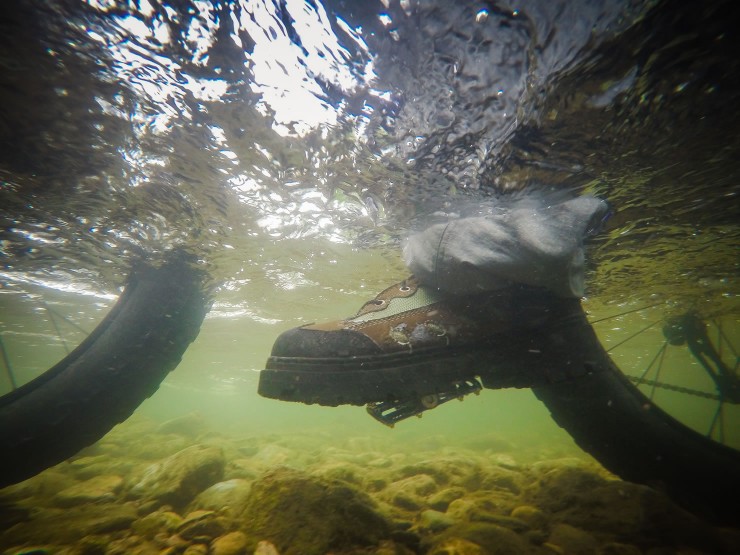
2. Pick good shoes and pedals.
I currently rock flat pedals when I use my bike to fish. In the spring when my home water is cold, I can ride on these pedals in my Patagonia Rio Waders and Foot Tractor wading boots. It allows me to carry less weight on my back as well since I am not dragging an extra set of footwear.
In the summer when I can wet wade in warmer waters I am in love with using shoes from Astral Buoyancy. These shoes are very similar to skate shoes and are at home dry or wet. I can ride comfortably in them, but also hike and wade in them with no issues. I have also used these on multi day tours. Their soft soles can be a bit hard on the foot on long rides. But having footwear that is both good in an out of the water, and dries fast, can be a way to save on weight when space and weight are at a premium.
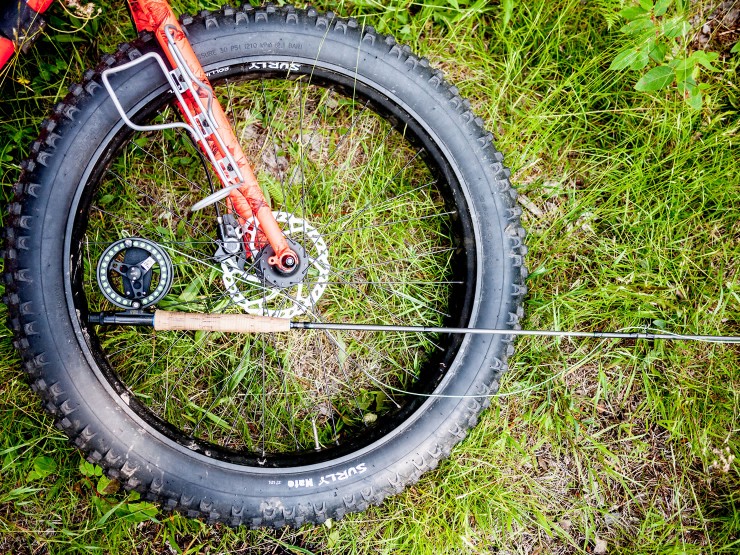
3. Choose Your Fishing Weapon.
Growing up as kid fishing I was the Ultimate Master of Spin – and I am not talking about rocking the plastic like a man from the Catskills.
I am talking spin fishing.
Hands down the most effective way to kill fish is to use a spinning rod. That said, you should not have to kill a lot of fish and if you end up fishing more for sport than for eating, using a fly rod is a great challenge.
You can imagine though that if you are on a long backcountry tour, hauling an ultralight spinning rod (I use a Falcon Rod and a Shimano reel) might be the better way to make sure you smell that sweet aroma of fried fish at night. With a spinning rod you can get deeper down in the water for a wider variety of fish species and in some cases cast further out without having to wade in a shoreline situation.
This nuance of course also depends on what kind of fish you’re fishing for and where you are fishing. If you are in a situation that is smaller stream or river oriented and the fish are surface feeders, then fly rods can be very effective meal makers as well.
I am a huge advocate for Catch and Release, however on a trip I am known to savor the flavor of a fish or two. I usually haul a one gallon Ziploc bag in my gear at all times, in case I end up keeping a fish or two and need to put the smelly thing in my gear until we set up camp.

For minimalists or if travel requires ultra lightweight gear, a simple fly rod called the tenkara rod is a perfect choice. When it comes to saving weight and space, you can’t beat its simplicity. With no reel, it breaks down to the size of an extra large Slim Jim and weighs just a little more than an energy bar. Casting flies with a tenkara rod is deadly on trout – in a pinch can pick off some of the more compact warm water species such as panfish as well.
I love the fact that I can literally tie my Sato Tenkara Rod onto my top tube of my bike using only the velcro straps of my Revelate frame bag. It’s so small and thin I often forget it’s there while I am riding.

4. Pack it all up.
Fishing is by its very nature is gear intensive. So how do you pack all this stuff up? I try to get as much weight off my body and onto my bike as possible. Improvements in bikepacking bags have made hauling everything I need extremely easy.
For longer trips I will strip out all my gear from my Fishpond fishing vest and stash those articles in my frame bag for easy access. For shorter trips and I just leave the fly-vest on or strap it to my rear rack. As I am always shooting photos I tend to pack more than the average angler. Because of that, I often carry a small Outdoor Research Drycomp Ridge waterproof backpack. Once I hit the water I am going to fish, I pull out the needed gear (camera and fishing) and I pack the bag at the water’s edge. I always have a fully sealed dry bag I can haul water hating articles in while I am fishing. The key for general overland travel is that there is as little weight as possible on your back, until you get off the bike.
I am a huge fan of the Revelate Designs bike bags. I use their frame bag and also their seat bag for my longer extended trips. For day trips I am a big fan of the Frost River top tube bag, handle bar bag and the six-pack rack bag.
Carrying fishing rods can present a challenge in themselves. Anytime I am riding a long time over rough terrain and through trees, I just ride with my rod broken down in its rod tube. Make sure you look for rods that breaks down as far as possible. I tend to use 5 piece fly rods. You can also find 5 piece spinning rods as well. However, I can also get away with a 2 piece shorter ultralight rod, as they tend to be fairly short lengths overall. There are such things as travel rods. Some of these can be really great options but beware of any rod that is touted to allow both spin fishing and fly fishing. Remember the old axiom that applies to fishing rods as well as bikes, skis and many others – anything that does everything does nothing well. I would pick one fishing discipline and stick with it.
Stay away from one piece rods. Too many times in my life I have I just tried to either ride with a rod in my hand or somehow lashed it in one piece to my bike. You will break the tip off your rod, you will get the line stuck in your chain, you will catch the rod on a tree and vault yourself off your bike… Trust me, I have done all that for you already! My choice is to strap my rod cases onto my rear rack. Depending on your fly vest, you may also incorporate a way to strap your rod tube to the vest itself.

5. Choose Your Route.
Obviously not every fishing experience is going to be conducive to access by bike. When I plan a fishing session on new water I generally look at a good topo map and look for sections of river or access to lakes that have long, long approaches. Many times you can see where the average fisherperson walks or hikes to then turns around. These anglers are limited by how fast and how far they can walk. With a bike you can hop scotch that ‘walk in zone’. So I look for routes that pass that walk in zone. Then I ditch the bike and walk a bit further to the water I am going to fish.
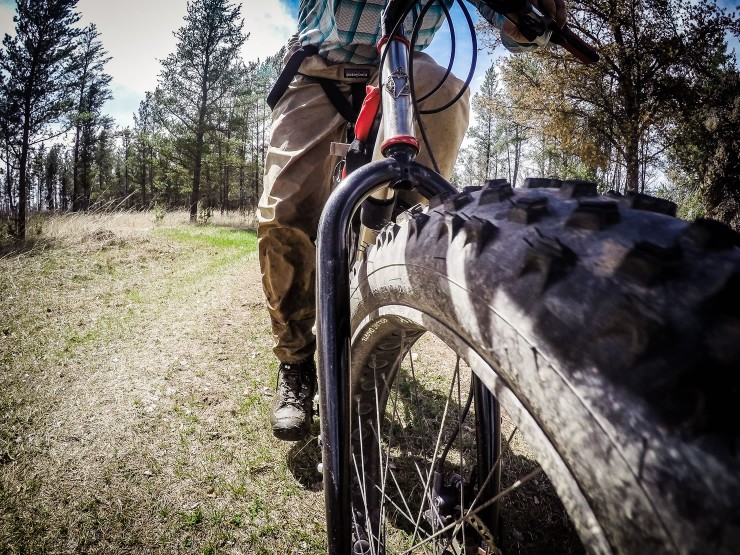
Always remember to look up your local rules and regulations before you fish, making sure you have the proper permits to do so. Not all fish are always in season, so make sure the bounty you are after is in play! Also keep in mind that in some bodies of water, there may restrictions based on the type and size of fish you can keep. Some bodies of water also have special rules on the types of fishing you can do. Possible restrictions can include the use of barbless hooks, or they may require you to use artificial lures only. These are set in place to protect your fishery – a barbless hook gives easier release to fish. Restrictions on live bait helps stop invasive species from entering the ecosystem.
Fishing is best done in the morning or evening but as I always say, there is never a BAD time to fish…. Keep an eye on weather conditions. Sometimes the time just after a rain is great, as certain fish target insects that are washed into the water. Depending on the species of fish you are hunting, after dark can also be a perfect time to fish as well.
I do a lot of research on my routes on Google Earth, but also scour the web for fishing reports and check my local land managers sites for maps that can help identify good fishing locations as well. I make it a point to call my local Department of Natural Resources to ask questions not only on rules and regulations, but also on the types of fish and the success rate of the bodies of water I am fishing. Most DNRs have some sort of fishery point person whose job it is to both collect and disseminate fishing information.
6. Don’t forget a repair kit
Bikes can get you deep into the backcountry and deep into some great fishing, but make sure you are also carrying the tools to do minor fixes to your bike if needed. I generally just keep a basic emergency bike kit in my bag containing a chain tool, a spoke wrench and all the stuff I need to change a flat and get me home safely.
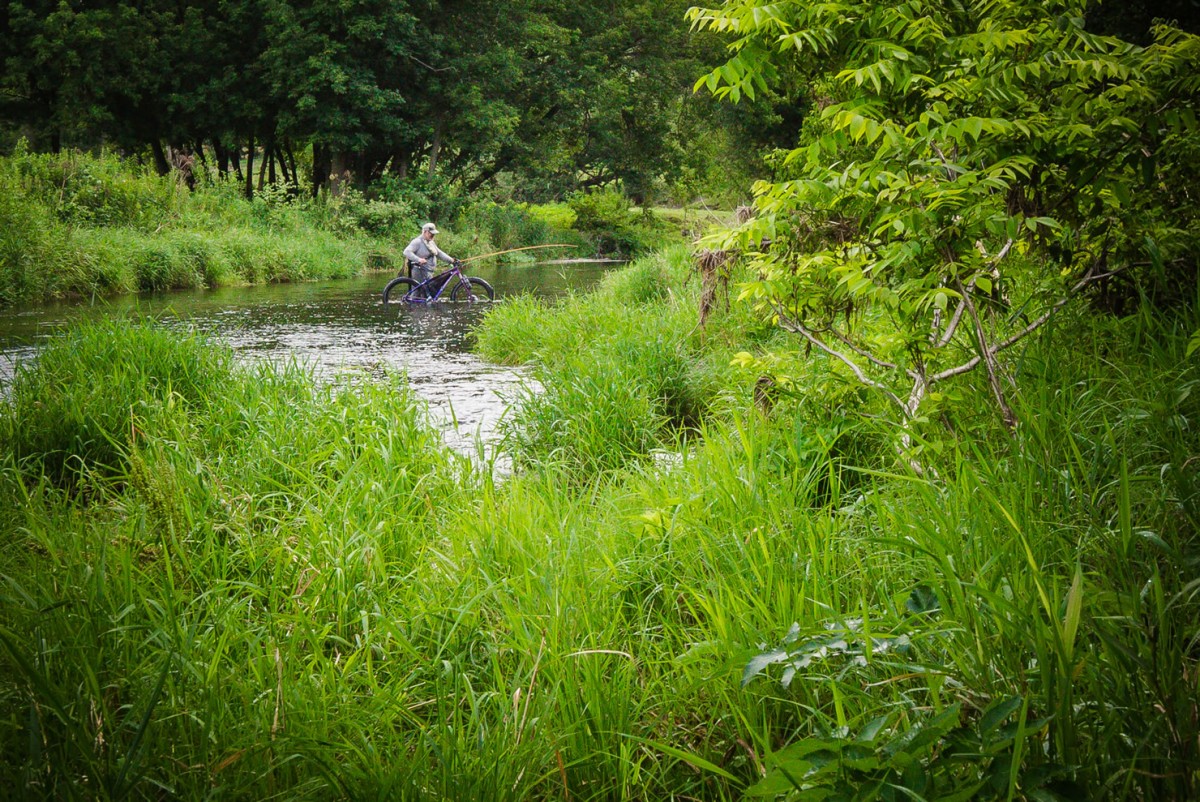
7. Stash Your Bike
Although I tend to be the trusting type, when I get to my fishing spot I like to hide my bike back in the woods a bit. I just don’t want it messed with or worse yet being hauled off. A few years back I had a fisherman start to roll away with my bike because he truthfully thought it had been left behind, due to some sort of emergency or had been stolen and dumped. Regardless I tend to bury it in the woods and lay it down and keep it out of sight. The only word of advice here is that remember you have to find it later!
I also tend to make sure I have some sort of light in that repair kit. Most fishermen will tell you that the sunset bite is generally a good one. I find I tend to push the light as far as I can which generally means I am coming out in the dark. A bike allows you to travel faster and thus have more time on the water and less in transit. That said, with the prospect of a dark ride ahead, it’s great to have a good light to get you home after a long day in the water.
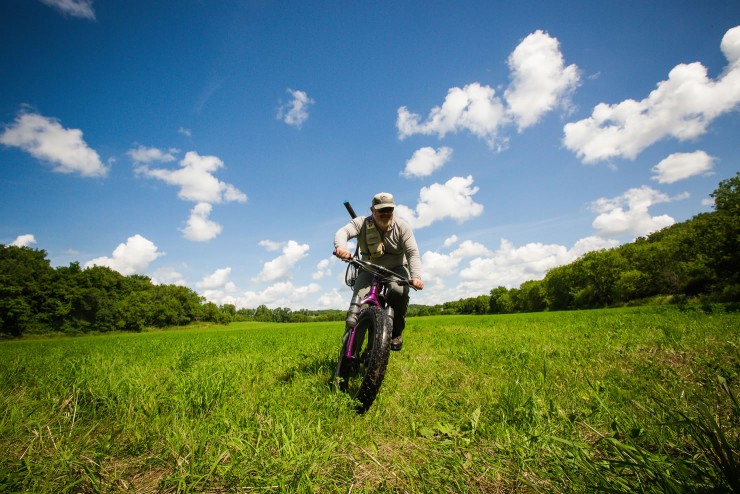
8. Bring the right clothing.
Clothing is obviously down to personal preference. Depending on the amount of riding, I think putting a padded bike short under lightweight pants can make a longer access ride that much more comforting. My fishing partners will tell you that I tend to be a glutton for punishment and often just use shorts for my fishing. I have found though that lightweight pants can be a saviour in certain types of woods, especially if they are thick with nettles or thistle.
9. Tread Lightly
Bikes on fishing trails or fishing access points are not common – many folks will express their opinions on how they feel about it. Most love it. Regardless, be respectful of other fisherman using the trails. Try and avoid impacting any trail you use your bike on, and be very considerate especially when it comes to river crossings. Sometimes there is a time and a place for riding across a river; sometimes it might be more respectful to quietly push your bike across, especially if there are other fisherman present on the river.
For many, fishing is about peace and quiet and solitude. While we may feel that a bike is a tool to access that same experience, not everybody is on board with that. So be respectful to fellow fishermen, as now not only are you representing sportspeople, you are also representing cycling as well.
Also, make sure that bikes are actually permitted in the place that you are fishing. Some public lands are designated off limits to bikes, so understand allowable uses before you go.
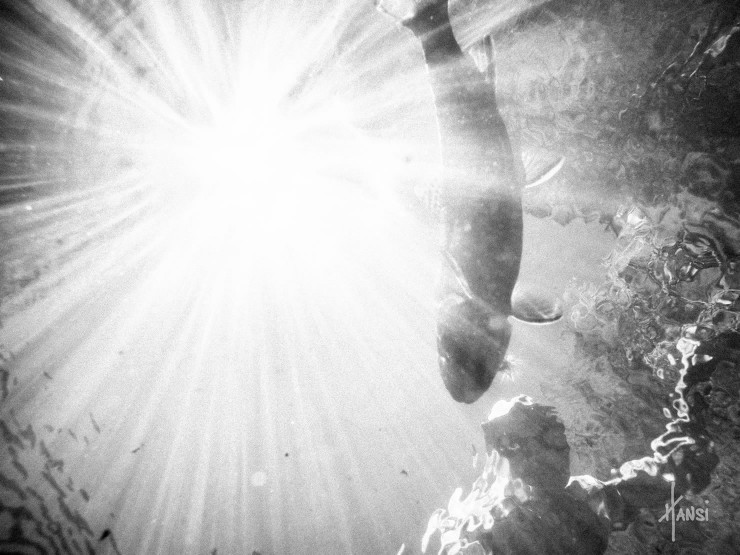
Hansi’s Summer Fishing Gear List
- Fishing rod (or rods)
- Reels.
- Tackle and tackle boxes. Could also be fly boxes if you’re fly fishing. Bring a variety of flies or fishing lures. I tend to haul along something that would be on the top of the water like a frog, and also things that lurk in the water, like minnows or crayfish. That way if fish are feeding on top water I have it, or if not I also have it!
- Fishing vest or sling pack. This is basically a way to carry your fishing specific gear.
Needle nose pliers or a hemostat. This is a crucial tool for taking hooks out of fish. Carrying a pair will help you release fish faster. - Small waterproof backpack.
- Small wire stringer. If I’m going to keep fish, I like to have a simple wire stringer. This way, I can save a fish by stringing it up and allowing it to live in the water. This is smart for several reasons. One, because if you don’t catch enough fish for a meal, you may be able to still release your first, lonely fish and go with Peanut Butter and Jelly. And two, if you do have enough for a meal, you can keep those fish in the cooler water and not let them spoil while you go after more fish.
- A small fillet knife. Rapala makes a sweet little 6 inch fillet knife. If you’re going to eat fish, you’re going to have to clean them. Trout and salmon are pretty straight forward. However if you’re eating fish like walleye, northern pike, bass or panfish, you are going to want to learn how to filet them. Having a long thin and flexible blade will make that work a snap. Also remember that when cleaning fish, to take it a long way from the river. Do it deep in the woods away from the water itself and anywhere where people may be. Leave the remains on a rock or log for scavengers. This is especially important if you’re in bear country, as you can imagine!
- Ziplock bags to keep your fish in.
- Tin foil. If you’re cooking them in the backcountry, some species of fish are just easier to bake in an open fire, so having some foil along is always a good practice.
- Small camera.
- Polarized sunglasses. They make a difference!
- Baseball hat to keep the sun off.
- Map, compass or GPS.
- Emergency Bike Tool Kit.
- Water Bottle.
- Bike lock , if you’re in a zone where you have to secure it.
- Headlamp/Bike light.
- Small thermos if you’re fishing in the spring or fall.
- Buff. I tend to haul a buff in case the bugs get really bad. I can pull it over my hat to keep flies or gnats off my neck and head. Also good for sun protection.
- Bungee cords for strapping stuff down.
- Fishing permit.
Bike fishing Resources
- Tenkara USA
- Tenkara Rod Co
- Trout Unlimited
- Take Me Fishing
- National Trout Center
- Learn some basic fishing knots
- Enjoy some fish recipes
- The basics – Catch and Release
- Differences between fly fishing and spin fishing
More about Hansi Johnson
In addition to acting as Director of Recreational Lands for the Minnesota Land Trust, Hansi hunts, fishes, fat bikes, and skis from his home base in Duluth, Minnesota. Keep up with his outdoor adventures by visiting his blog Universal Klister, a collection of outdoor advocacy and photography. You can enjoy more of Hansi’s stunning images in our Rider’s Lens profile.
Please keep the conversation civil, constructive, and inclusive, or your comment will be removed.






